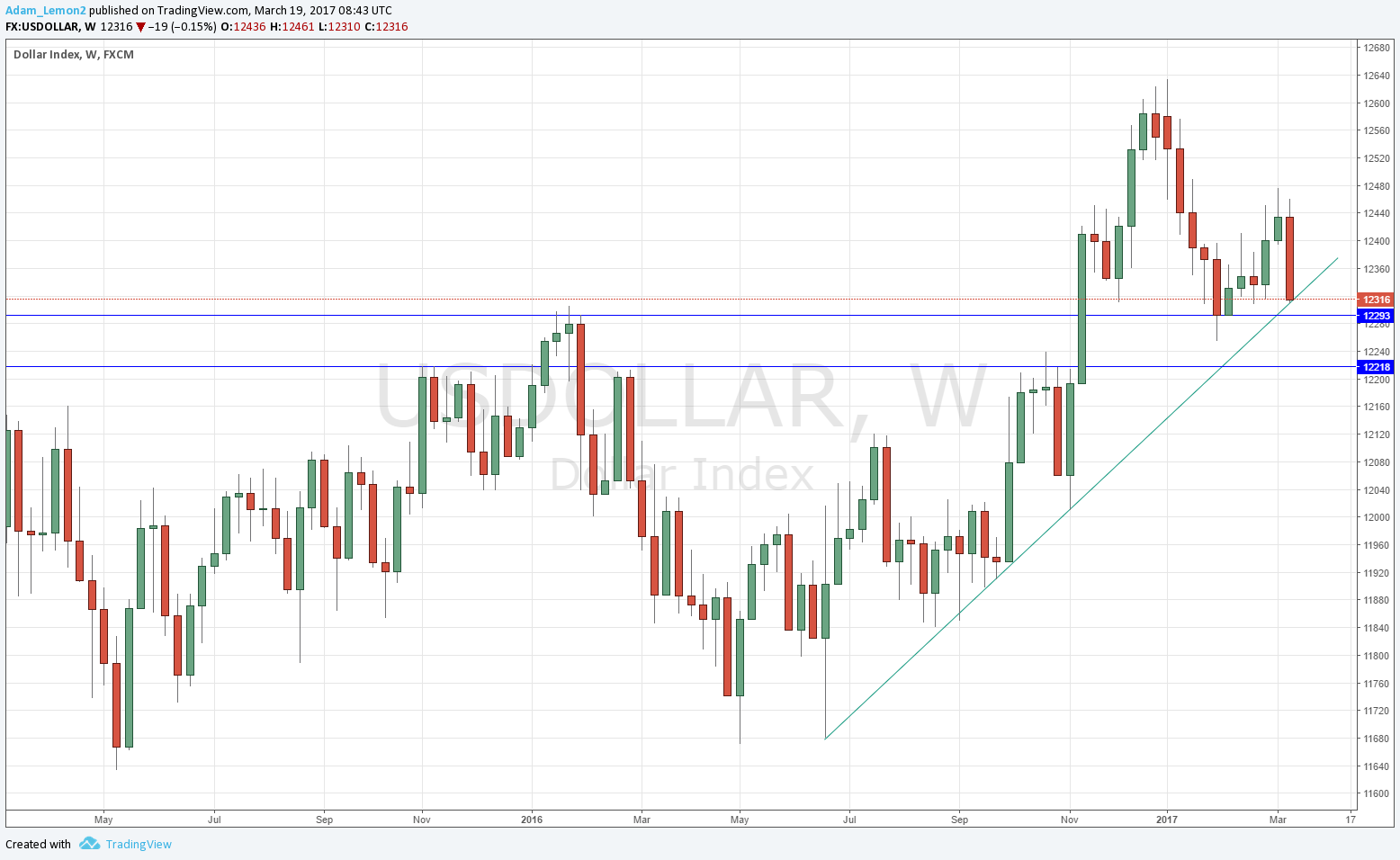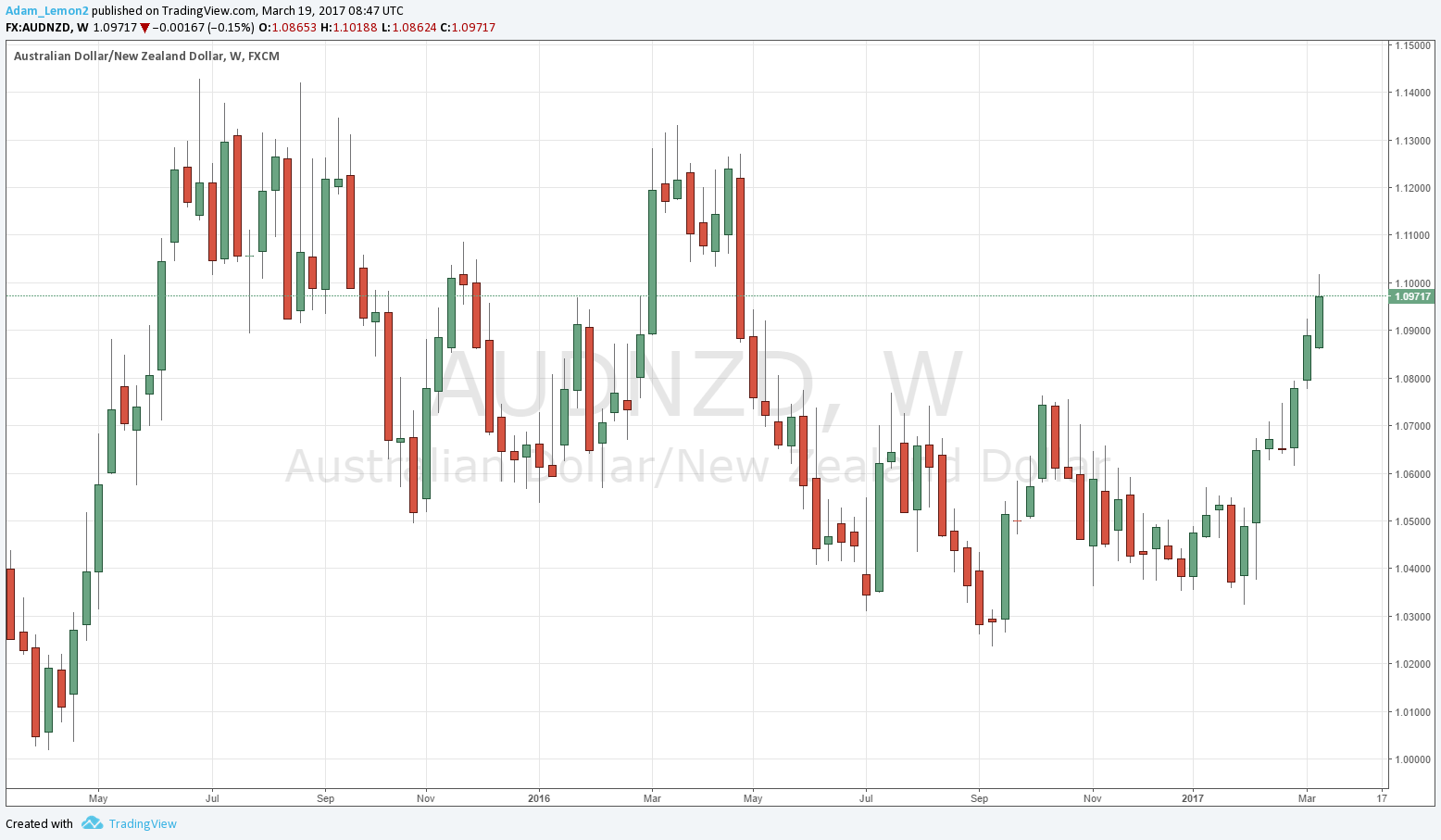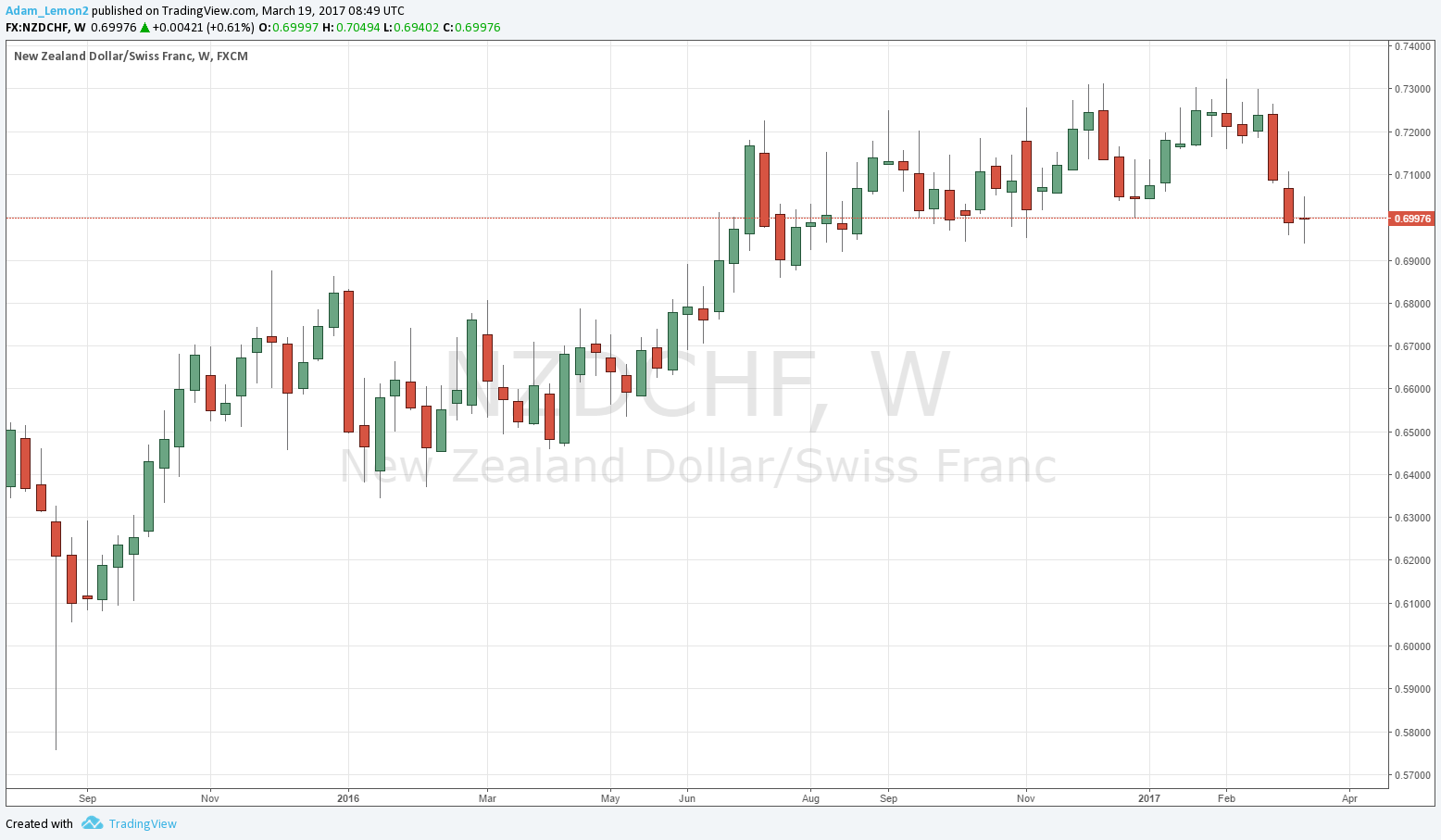The difference between success and failure in Forex trading is very likely to depend upon which currency pairs you choose to trade each week, and not on the exact trading methods you might use to determine trade entries and exits. Each week I am going to analyze fundamentals, sentiment and technical positions in order to determine which currency pairs are most likely to produce the easiest and most profitable trading opportunities over the next week. In some cases it will be trading the trend. In other cases it will be trading support and resistance levels during more ranging markets.
Big Picture 19th March 2017
Last week, I predicted that the best trades for this week were likely to be short NZD/USD and GBP/USD, and long USD/CAD. All these trades were losers, with the NZD/USD rising by 1.36% and the GBP/USD rising by 1.87%. The USD/CAD fell by 0.88%. The average loss was 1.37%.
The Forex market remained in a relatively indecisive mood with few clear trends, particularly regarding the U.S. Dollar which is usually the main engine behind major market moves. Although the FOMC raised rates last week by 0.25% as expected, the dovish comments on inflation drove the market to treat it as a sign of looser than expected policy, which had the effect of driving the USD down. This suggests that the bullishness in the greenback is more muted.
The most bearish currency in general against a long-term basket of currencies remains the New Zealand Dollar, and to a lesser extent the British Pound. The most bullish currencies are the Australian Dollar and Swiss Franc. Therefore, I suggest that the best trade of the coming week will be long the Australian Dollar and Swiss Franc, and short of the New Zealand Dollar.
Fundamental Analysis & Market Sentiment
The major elements affecting the market right now is the continuing inability of the U.S. Dollar to fully resume its bullish trend, and doubts over the Federal Reserve’s ability to tighten its monetary policy in the way that would naturally be expected to occur this year.
The British Pound has also had some positive attention as one of the members of the Bank of England’s Monetary Policy Committee was seen to have voted for a rate hike, which has put a bid into a previously weak Pound.
Technical Analysis
USDX
The U.S. Dollar printed a strongly bearish engulfing candle with a notable upper wick, closing hard on its low. The price is right on the supportive trend line but looks as if it will break it. The price is not far from a zone likely to provide support, but there is bearish momentum, suggesting there will be an indecisive movement. Also, the price is neither above nor below its levels from 3 months and 6 months back, which is another sign of probable indecision.
AUD/NZD
This week we see another large bullish candle following last week’s large bullish candle, breaking up into “blue sky”. The price is also above its levels from both 3 months and 6 months, indicative of a long-term bullish trend. All the signs are bullish except one: the Australian Dollar is at long-term resistance against the USD, above 0.7700. This may again halt its rise.
NZD/CHF
The trend here is not as strong as that which we saw in the AUD/NZD cross, but the price is below its levels from both 3 months and 6 months, and we are seeing weekly closes at multi-month lows. On the other hand, this week’s candle was a small doji, which sometimes comes ahead of a reversal, but also sometimes signifies a forthcoming strong move in line with the long-term trend.
Conclusion
Bullish on the Australian Dollar and Swiss Franc; bearish on the New Zealand Dollar.



